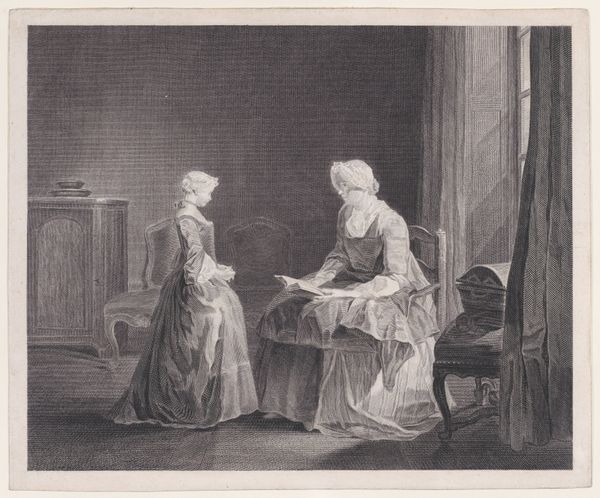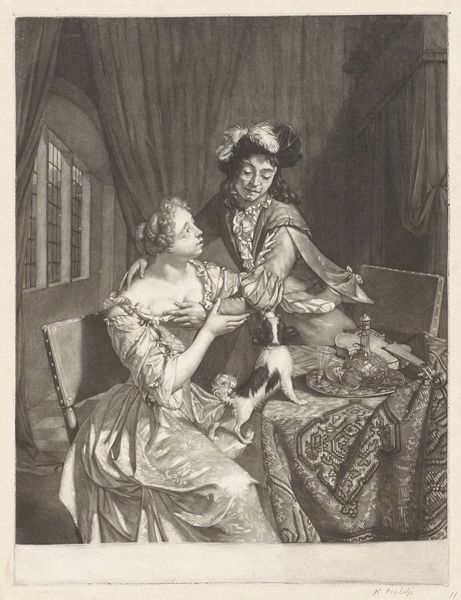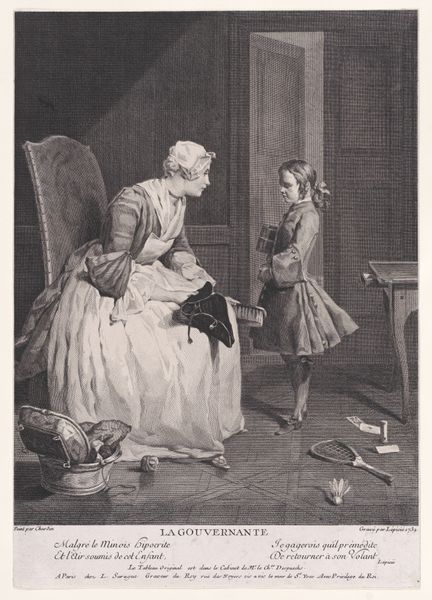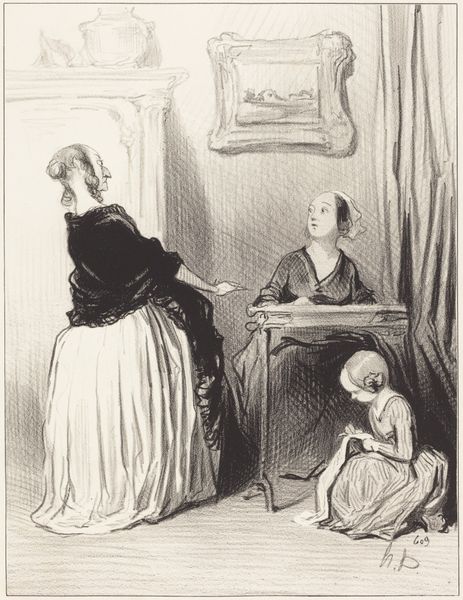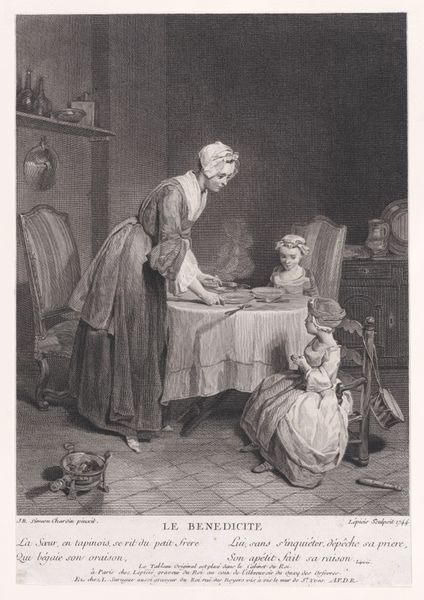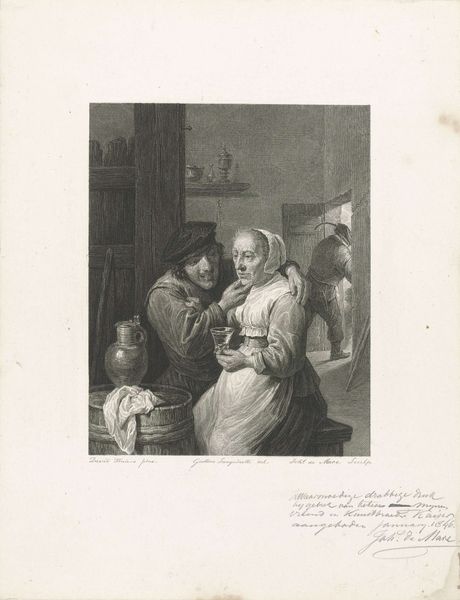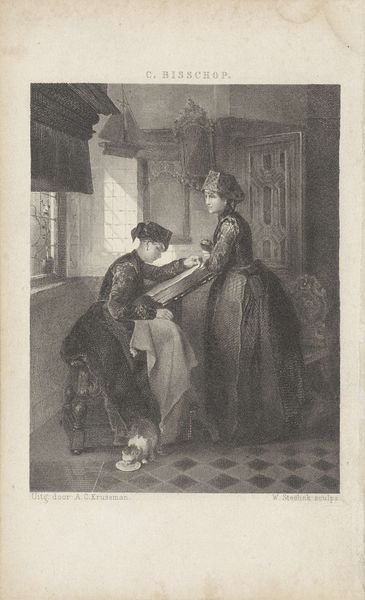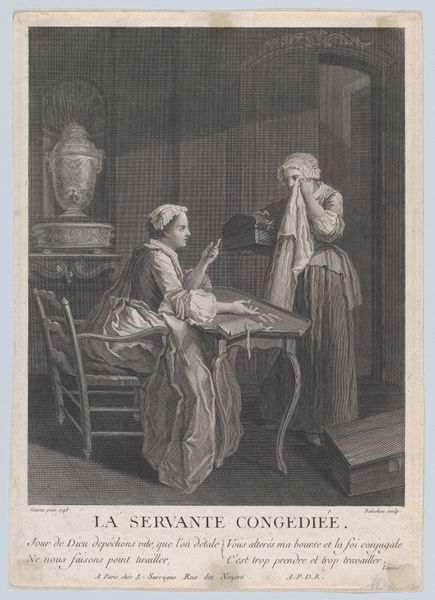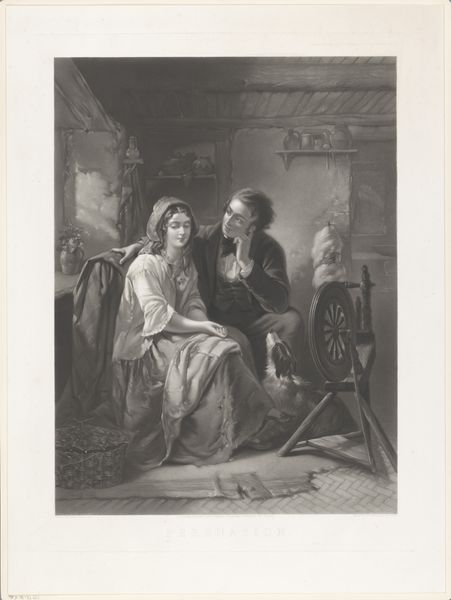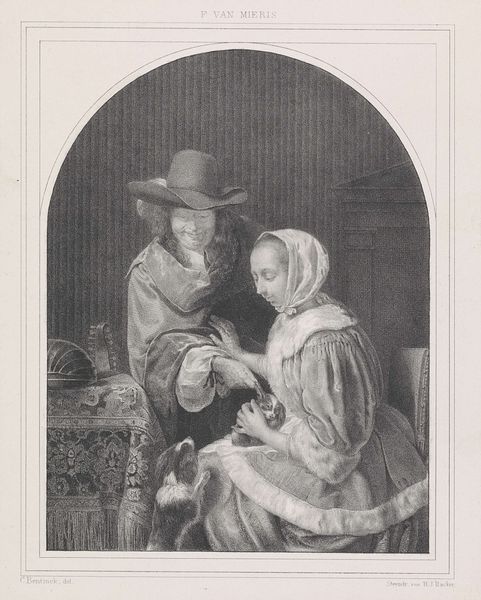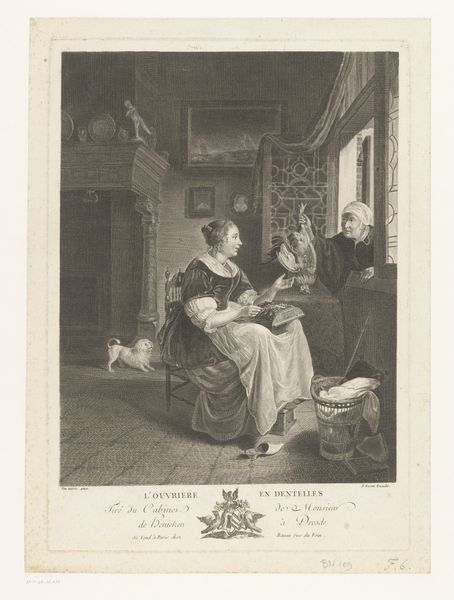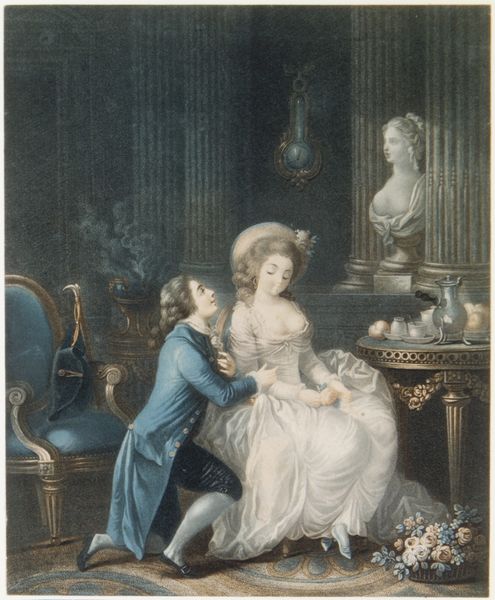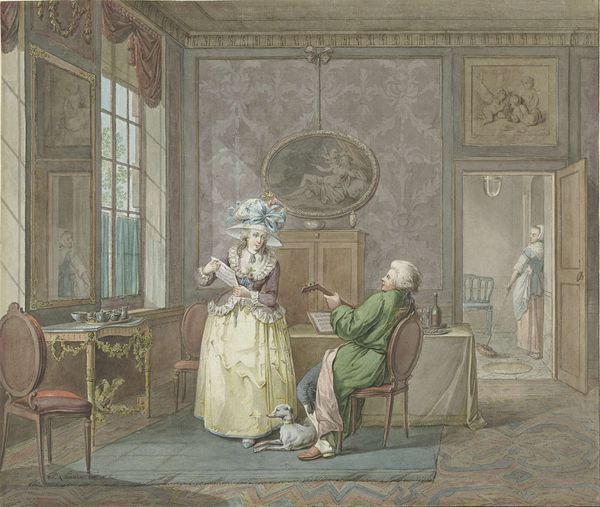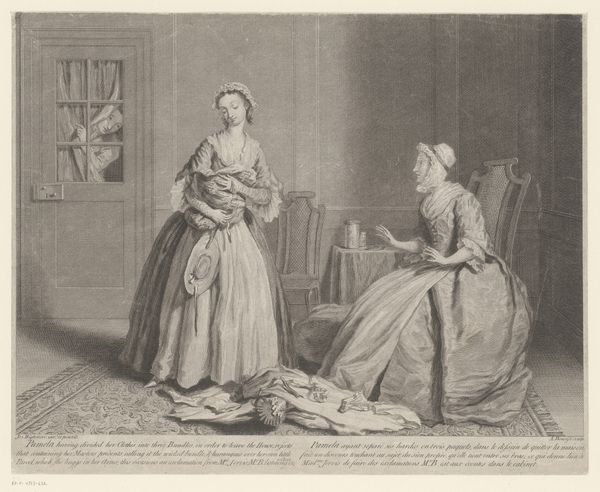
Historisch interieur met zittende vrouw en staande, lezende man 1818 - 1863
0:00
0:00
drawing, ink, pen
#
portrait
#
drawing
#
figuration
#
historical fashion
#
ink
#
romanticism
#
19th century
#
pen
#
genre-painting
#
realism
Dimensions: height 172 mm, width 149 mm
Copyright: Rijks Museum: Open Domain
Curator: Willem Pieter Hoevenaar created this drawing, titled "Historic Interior with Seated Woman and Standing, Reading Man," sometime between 1818 and 1863. It's ink and pen on paper, and the scene feels quite intimate, don't you think? Editor: Indeed, a very private moment. My first impression is of melancholy. The subdued palette contributes to that feeling, a sort of gray film over the whole scene. There's a quiet drama unfolding. Curator: Absolutely. The choice of historical fashion, though, also says something about longing for a different time, perhaps one perceived as simpler or more romantic. What symbols do you see that enhance our understanding of this work? Editor: The letter, of course, is central. It's a vessel for emotional content, likely influencing the woman's reserved posture and expression. The dog could symbolize fidelity and loyalty to their domestic lives in their interior lives. Those figures flanking the mantle piece in the back contribute an air of antiquity too. Curator: I agree, that letter feels heavy with unspoken significance. Thinking about the societal constraints of the time, especially for women, the interior setting feels almost like a gilded cage. Is she trapped, waiting for news, a proposal, or perhaps release from her social role? Editor: It's fascinating how genre paintings like this both reflect and perpetuate specific gender roles. The man active, reading, intellectually engaged; the woman passively awaiting news. But notice how her gaze evades his…there could be an unspoken rejection occurring, adding to that overall melancholy. Curator: It also emphasizes how access to literacy and knowledge was unevenly distributed. He controls the narrative through the letter, while her agency is limited to reaction. Perhaps we should look to her clothes. She could have as much social status as he, we really do not know, the period clothing provides anonymity. Editor: Precisely! Costume dramas aren't simply about nostalgia. They allow us to explore these complex negotiations of power and identity that still resonate. Her averted eyes suggest a silent act of resistance maybe? Curator: It could certainly be read that way. This piece, though seemingly simple, layers meaning through its representation of both history and human relationship. The real appeal lies within the subtle communication that lingers like the ever present question, “What does it all mean?” Editor: In its intimate details, in its masterful use of light and shade, and in the subtle emotions conveyed, Hoevenaar's drawing leaves a lasting impact on the viewers still today. Thank you for diving in with me.
Comments
No comments
Be the first to comment and join the conversation on the ultimate creative platform.
